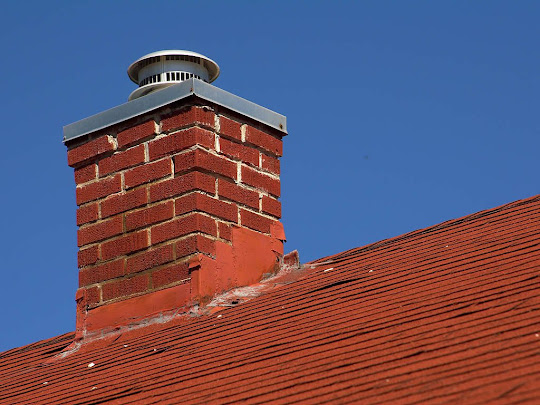Mastering Chimney Inspections: Key Guidelines to Follow
Picture this: a winter’s evening, snow falling gently outside, and the radiant warmth of your fireplace casting a comforting glow. But to keep this dreamy scenario safe and sound, regular chimney inspections are non-negotiable. In this blog post, we’ll be your guide through the intricate maze of chimney inspection rules that every responsible homeowner must adhere to. Failure to follow these guidelines could turn your beloved hearth into a potential fire hazard, jeopardizing the safety of your home. Let’s explore these chimney maintenance rules to ensure the continued warmth and security of your abode.
The Importance of Chimney Inspections
First and foremost, it’s essential to understand why chimney inspections are not to be taken lightly. Chimneys are exposed to extreme temperatures and various elements, leading to wear and tear over time. Regular inspections help in:
- Preventing Potential danger
Creosote, a highly flammable substance, can accumulate within your chimney over time, creating a lurking danger. The essence of chimney inspections lies in their ability to identify and remove this combustible buildup, serving as a potent deterrent against catastrophic chimney fires.
- Prolonging Chimney Lifespan
Regular chimney inspections can significantly extend the lifespan of your chimney. By identifying and addressing issues early on, you can prevent minor problems from escalating into major, costly repairs. This proactive approach ensures that your chimney continues to serve your home for many years to come, saving you both time and money in the long run.
- Unearthing Structural Imperfections
Beneath the surface, chimneys face the harsh test of time and weather, which can lead to hidden structural issues. Inspections are akin to a skilled detective, uncovering flaws like cracks in the flue or damage to the chimney crown. Detecting these issues early and addressing them promptly is the cornerstone of preserving your chimney’s structural integrity and your peace of mind.
When to Schedule Chimney Inspections?
After a Chimney Installation or Major Repair: If you’ve recently installed a new chimney or undergone significant repairs, it’s crucial to schedule an inspection to confirm that the work was completed correctly and that the chimney is safe for use.
When Buying or Selling a Home: If you’re buying a new home with a chimney or selling your current one, a chimney inspection is often part of the home inspection process. Ensure that the chimney’s condition is thoroughly assessed to avoid surprises or negotiate repairs as needed.
Annually for Wood-Burning Fireplaces: For homes with wood-burning fireplaces, an annual inspection is recommended. This frequency ensures that any creosote buildup, blockages, or damage is promptly addressed to maintain safety and efficiency.
Before and After Long Periods of Inactivity: If you haven’t used your chimney for an extended period, such as during the summer months, it’s advisable to schedule an inspection before using it again. Likewise, after a prolonged period of inactivity, have it inspected to ensure it’s still in good working order.
DIY vs. Professional Inspections
The next question homeowners often ask is whether to perform chimney inspections themselves or hire a professional chimney sweep. While some aspects of inspection can be done DIY-style, there are compelling reasons to opt for a professional:
- Safety First: Chimney inspections can be hazardous, especially if you lack experience. Climbing onto rooftops and navigating chimneys requires knowledge and safety equipment that professionals possess.
- Thoroughness: Professionals have the training and expertise to conduct comprehensive inspections. They can identify issues that you might miss during a DIY inspection.
- Certification Matters: Reputable chimney sweeps are certified and adhere to industry standards. Hiring a certified professional ensures that your inspection is conducted correctly.
Chimney Inspection Checklist
Here’s a checklist to give you an idea of what a thorough chimney inspection should cover:
- Creosote Buildup: Check for creosote buildup, a leading cause of chimney fires. Creosote should be removed to prevent potential hazards.
- Chimney Liner: Inspect the condition of the chimney liner. Cracks or damage to the liner can pose serious safety risks.
- Chimney Cap and Crown: Examine the chimney cap and crown for signs of wear and damage. These components protect your chimney from water intrusion, which can lead to structural issues.
- Flashing: Ensure that the flashing, which seals the area where the chimney meets the roof, is intact and functioning correctly.
Common Chimney Problems
During an inspection, you may encounter common issues that need attention:
- Deteriorating Masonry: Over time, the bricks and mortar of a chimney can degrade due to weather exposure. Deteriorating masonry not only affects the chimney’s appearance but also compromises its structural integrity.
- Faulty Chimney Liner: A damaged or deteriorating chimney liner can lead to various problems, including reduced efficiency, increased risk of fires, and potential carbon monoxide leaks. Inspecting and maintaining the chimney liner is essential.
- Smoking or Draft Issues: Poor chimney draft can result in smoking problems, where smoke doesn’t properly exit the fireplace or stove and instead enters the room. This can be caused by various factors, such as chimney height, blockages, or inadequate venting. Addressing draft issues is essential for a safe and enjoyable fireplace experience.
- Chimney Cap and Flashing Issues: Damaged or missing chimney caps and faulty flashing can allow water and debris to enter the chimney, causing a range of problems, from blockages to water damage. Regularly inspect and maintain these components to ensure their functionality.
.jpg)
.jpg)
.jpg)

Comments
Post a Comment